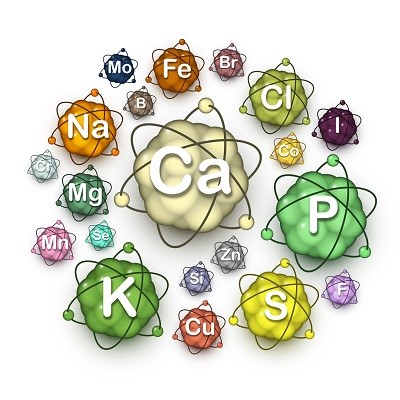 Your body depends on nutrients like vitamins and minerals to maintain proper functioning in many key areas. When the building blocks of your body, minerals, are out of balance, you can develop many different symptoms and health problems.
Your body depends on nutrients like vitamins and minerals to maintain proper functioning in many key areas. When the building blocks of your body, minerals, are out of balance, you can develop many different symptoms and health problems.
What’s more important than the individual level of each mineral in your body is the ratio of these minerals to one another.
Keeping your mineral concentrations balanced helps maintain proper health and understanding your own mineral balance can help you address symptoms and disorders at their root rather than just treating the symptoms you are experiencing.
Addressing mineral imbalances can treat both acute and chronic disorders of many kinds. So how do you know your mineral balance?
Hair Tissue Mineral Analysis
Hair tissue mineral analysis, also called hTMA, uses a small sample of your hair to test for the presences and concentration of 33 different elements can be found in your hair, including minerals and toxins. You will be able to see how minerals like potassium, magnesium, and calcium are contributing to your overall health and well-being.
This non-invasive test is used for diagnosis, monitoring, and screening purposes, and it gives you an overview of the levels and ratios of your essential minerals. These results can help you make decisions about nutrition and dietary supplements that may improve your health.
While blood tests are helpful and necessary for many different purposes, hair analysis provides a different picture of your mineral levels. Hair analysis is able to detect mineral deficiencies and toxic loads long before blood samples, as your body must maintain blood levels within very narrow ranges to maintain survival.
Causes of Mineral Imbalances
We get all our minerals from our environment because our bodies cannot generate these on their own. The most apparent cause of a mineral imbalance is, therefore, the diet. Other factors, like stress levels, medicines, genetic factors, and pollutants all play a role in how well our bodies absorb and hold onto the minerals we take in from the foods we eat.
Some of the specific factors that can contribute to a mineral imbalance are:
- Eating a diet high in refined foods or alcohol
- Eating food that comes from depleted soils
- Taking oral contraceptives
- Smoking
- Taking incorrect dosages of supplements
Mineral Imbalance’s Effect on Health
There are countless ways that having too much or not enough of one or more mineral can impact your health. We will illustrate with an example. Let’s say you are fatigued and can’t seem to shake it. You have two main components in your body that produce energy- the adrenal glands and the thyroid. If one of these is not working properly, the other will have to compensate and may become strained, as well.
When we examine the results from an hTMA, we would examine both the potassium and calcium levels. If calcium is greater than 4.2 times that of potassium, you have hypothyroidism. Because these two minerals significantly affect each other, and both play essential roles in your daily functions, this is beneficial information.
When you just focus on mineral levels, versus their ratio to one another, you lose important insight about how each of the minerals impacts the others. Vitamin D, for example, can cause a deficiency in magnesium. If you just knew you were deficient in magnesium, you might just start taking magnesium supplements, but you would be better served to also reduce your intake of Vitamin D as well as calcium.
Final Thoughts
Using hTMA results can help you identify possible culprits for symptoms or disorders you are experiencing, but it can also help you make better dietary choices and understand how your body works collectively for your health. Using these results in consultation with your physician, acupuncturist, holistic healer, or other care provider can allow you to make better choices about your health.






